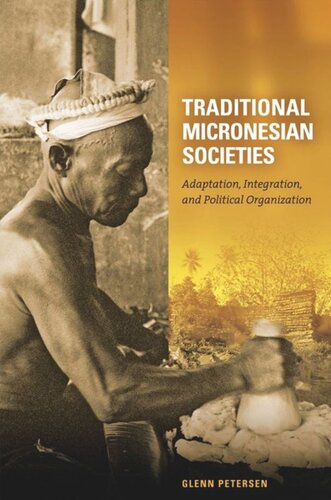

Most ebook files are in PDF format, so you can easily read them using various software such as Foxit Reader or directly on the Google Chrome browser.
Some ebook files are released by publishers in other formats such as .awz, .mobi, .epub, .fb2, etc. You may need to install specific software to read these formats on mobile/PC, such as Calibre.
Please read the tutorial at this link: https://ebookbell.com/faq
We offer FREE conversion to the popular formats you request; however, this may take some time. Therefore, right after payment, please email us, and we will try to provide the service as quickly as possible.
For some exceptional file formats or broken links (if any), please refrain from opening any disputes. Instead, email us first, and we will try to assist within a maximum of 6 hours.
EbookBell Team

5.0
68 reviewsTraditional Micronesian Societies explores the extraordinary successes of the ancient voyaging peoples who first settled the Central Pacific islands some two thousand years ago. They and their descendants devised social and cultural adaptations that have enabled them to survive—and thrive—under the most demanding environmental conditions. The dispersed matrilineal clans so typical of Micronesian societies ensure that every individual, every local family and lineage, and every community maintain close relations with the peoples of many other islands. When hurricanes and droughts or political struggles force a group to move, they are sure of being taken in by kin residing elsewhere. Out of this common theme, shared patterns of land tenure, political rule, philosophy, and even personal character have flowed.
To describe and explain Micronesian societies, the author begins with an overview of the region, including a brief consideration of the scholarly debate about whether Micronesia actually exists as a genuine and meaningful region. This is followed by an account of how Micronesia was originally settled, how its peoples adapted to conditions there, and how several basic adaptations diffused throughout the islands. He then considers the fundamental matters of descent (ideas about how individuals and groups are bound together through ties of kinship) and descent groups and the closely interlinked subjects of households, families, land, and labor. Because women form the core of the clans, their roles are particularly respected and their contributions to social life honored. Socio-political life, art, religion, and values are discussed in detail. Finally, the author examines a number of exceptions to these common Micronesian patterns of social life.
Traditional Micronesian Societies illustrates the idiosyncrasies of individual Micronesian communities and celebrates the Micronesians’ shared ability to adapt, survive, and thrive over millennia. At a time when global climate change has seized our imaginations, the Micronesians’ historical ability to cope with their watery environment is of the greatest relevance.